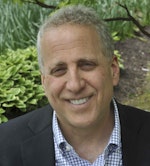Who is the "best" dentist in your area? And what does it mean to be the "best" in one's field?
I imagine, from a professional standpoint, a hypothetical "best" dentist is one who is talented at performing flawless dental procedures and who has an extensive knowledge base in town. From a patient's perspective, it might refer to a dentist who doesn't cause them pain, is confident in their abilities, and is able to produce the most natural-looking dentistry. Whether from a dentist's or patient's perspective, the "best " dentist in the area possesses knowledge far above the "average" dentist.
The four keys for success
For over a year now, I have been writing about the benefits and challenges of creating or running a small, solo practitioner fee-for-service (FFS) practice. I have discussed the four key elements that I believe are essential to make an FFS practice successful. These include:
-
The ability to forge relationships with your patients
-
A thorough and targeted budgeting process (i.e., business skills)
-
Cultivating a superstar staff
-
An intensive CE regimen (which is arguably the building block that everything else rests on)
An FFS practice can offer more time with your patients, more time to complete labor—intensive procedures, higher profit from those procedures, less stress, and more overall job satisfaction. The major roadblock is, of course, having fewer patients.
Most dental patients will look for a dentist who participates with their insurance plan, so why would they choose to come to you if you are out of network? Honestly, many patients will find out that you do not "take their insurance" and will move on to find a more insurance-friendly office (even though being out of network simply means that they just have less coverage with you).
To attract patients who value excellent dentistry and are willing to pay for it, you must be at the top of your game. You must create the reputation for being one of the "best" dentists in your area—and it all starts with CE. I'm talking about a targeted plan of CE to increase your skills in order to help you become the best dentist that you can be. A targeted CE plan can increase your skills, starting with a clear and honest assessment of your strengths and weaknesses when it comes to providing excellent dentistry.
Skill assessment and improvement
Let's say you are producing eight veneers for a patient who is paying in full. The process includes pretreatment planning (maybe using an articulator and face bow to assess the occlusion) and prepping the teeth so that the lab has enough room to work their magic. You must also create temporaries that closely mimic the anticipated result while dealing with the bonding process that keeps the temporaries intact (but enables you to remove them). You also have to worry about inserting the porcelain veneers—including verifying the correct fit, interproximally as well as marginally—then dealing with the meticulous care needed to finalize the occlusal scheme so the veneers will not chip or break. Lastly, there is the post insertion evaluation to ensure that your veneers have the correct tooth shape, angulation, and texture. By my count, that is at least 8 separate steps that need to be precisely carried out in order to create an outstanding result.
This procedure is a long, complex process, and any one of the steps involved could justifiably be the subject of an entire CE course. How confident are you in creating tooth shapes from scratch? Are you happy with your bonding regimen and materials? Do your temporaries look natural and almost as good as the permanents? My point is that the ability to create exquisite dentistry is essential if you want to create the reputation of being one of the "best" in your area.
Even though it sounds like a cliché, becoming the "best" is a journey. My suggestion would be to do your homework first. It will help you pick a CE institute that aligns with your goals. There are several very good learning centers in the US (the Dawson Academy, the Pankey Institute, the Kois Center, and Spear Education, to name a few). The one thing these organizations have in common is that they focus their training around the concept of complete dentistry, which will be addressed in my next article. I believe that it is much harder to run a profitable FFS practice without a working knowledge of complete dentistry principles.
Picking the right CE course
Maybe counterintuitively, a broad CE regimen is necessary to teach you what to do when things go wrong. What do you do when a temporary keeps breaking, or your patient develops a clicking joint after you have treated them, or your bonding on a front tooth does not match the other teeth? Take it from me: things will go wrong.
But with enough CE under your belt, you know that you can handle whatever situation comes your way. This starts by creating a partnership with your patient so that the two of you can work together toward a solution (as opposed to unintended results being "your fault").
Which brings me to my final thought on the importance of continual learning: quality CE is expensive, especially when you factor in travel expenses and time out of the office. At one point in my career, I was spending close to $50,000 a year on CE and travel. I vividly remember my father coming to me in a concerned tone, asking me if I was seeing a return on my large investment. I thought about it for a minute and replied that, yes, the information that I was learning has helped me to do larger cases at higher fees. However, receiving information at increasingly higher levels of understanding has enabled me to look my patient in the eye and say that I am providing the best care possible. And even if things don't work out as planned with our treatment plan, I can assure the patient that we will correct the problem and create their desired result together. The kind of confidence that translates into extreme job satisfaction is priceless! “The best” is a very subjective term that with advanced knowledge and skills will provide you with the confidence to see yourself the same way as your patients see you.
Editor's note: This article appeared in the January 2025 print edition of Dental Economics magazine. Dentists in North America are eligible for a complimentary print subscription. Sign up here.







